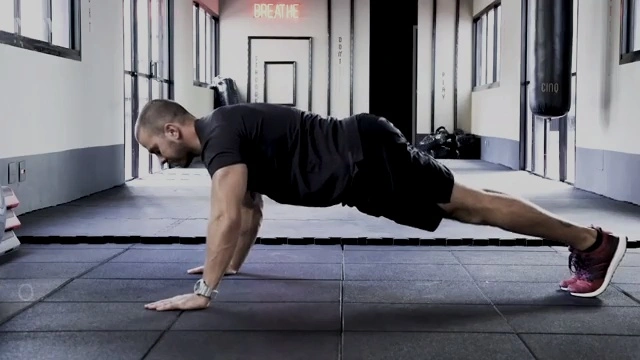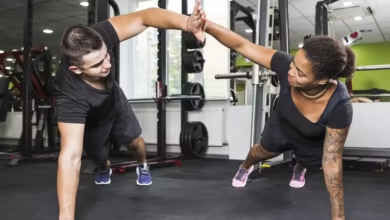Master Bodyweight: How to Do Different Kinds of Push-Ups for a Complete Chest
How to Do Different Kinds of Push-Ups

The push-up is arguably the most universal exercise for developing upper body strength and muscle, making it ideal for equipment-free workouts. However, to achieve a truly strong and aesthetic chest, simply performing the standard push-up isn’t enough.
It’s crucial to know how to do different kinds of push-ups. Each variation manipulates the body angle and hand position, directing the effort to specific parts of the chest muscle, fostering more symmetrical and comprehensive development. Integrating these variations is key to continuous progression, even when training solely with bodyweight.
READ ALSO:
- Quick Exercise for Lower Back Pain Relief: Simple Moves That Work
- Does Running Help You Lose Weight? How to Start and Progress Without Losing Your Breath
Follow our PAGE
The Foundation: Standard Push-Up and Muscle Activation
Before moving to complex variations, mastering the fundamental technique is essential. The standard push-up primarily activates the Pectoralis Major (mid-chest), with secondary assistance from the Deltoids (shoulders) and Triceps.
Perfect Base Push-Up Technique
- Starting Position (Plank): Keep your body in a straight line, from head to heels. Hands should be slightly wider than shoulder-width, with fingers pointing forward or slightly out.
- Core and Lower Back: Keep your abs and glutes tightly braced. This stabilizes the spine and prevents your lower back from sagging, which prevents injury.
- Controlled Descent: Lower your body slowly until your chest nearly touches the floor. Keep your elbows tucked in at about a 45-to-60-degree angle relative to your torso (avoid letting them flare straight out to the sides, forming a “T”).
- Explosive Ascent: Push the ground away, fully extending your elbows to return to the starting position.
Variations That Divide and Conquer the Chest
Push-up variation is achieved by changing the body’s inclination or the hand width, which shifts the center of gravity and, consequently, the muscle activation focus.
1. Push-Up for Upper Chest (Decline)
This is an advanced difficulty variation, as it increases the percentage of body weight supported by the arms.
- Execution: Position your feet on an elevated surface (bench, box, or chair) while your hands remain on the floor.
- Main Focus: Elevating the feet directs most of the effort to the upper chest (clavicular head), an area often difficult to target with flat-surface exercises.
- Warning: This variation demands greater core stability and shoulder strength.
2. Push-Up for Lower Chest (Incline)
This variation is ideal for beginners or for workout finishers, as it is the easiest.
- Execution: Position your hands on an elevated surface (bench or box) and your feet on the floor.
- Main Focus: The higher the surface, the easier the movement, as less body weight is being lifted. The body angle directs the stimulus to the lower portion of the chest.
- Progression: It’s the ideal starting point for those who cannot yet complete a standard push-up with proper form.
3. Push-Up for Triceps and Medial Chest (Diamond)
This variation is challenging and shifts a large part of the work to an auxiliary muscle.
- Execution: Place your hands close to each other, directly under the center of your chest, forming a “diamond” or triangle shape with your thumbs and index fingers.
- Main Focus: This is one of the best variations for training the triceps, but it also concentrates stress on the central (medial) portion of the chest, helping to create definition down the middle.
- Note: Your elbows should track mostly backward (close to the body), not out to the sides.
4. Wide-Grip Push-Up (Outer Chest)
This variation increases the stretch on the chest muscles.
- Execution: Place your hands significantly wider than shoulder-width.
- Main Focus: The wider grip increases the stretch and activation of the outer chest fibers, contributing to a broader look.
- Warning: Do not over-widen the grip, as this can place unnecessary stress on the shoulder joints and reduce the total range of motion.
Structuring the Workout and Avoiding Common Mistakes
For push-ups to promote hypertrophy, progression and technique are non-negotiable.
- Smart Progression: Start with incline or knee push-ups. Master 3–4 sets of 10–15 repetitions with perfect form before moving to the standard push-up. Only then progress to more difficult variations (decline and diamond).
- Maintain Full Range of Motion (ROM): Avoid “half reps.” Only partially descending limits the muscular stimulus. Aim for the greatest possible ROM, getting your chest close to the floor.
- Controlled Tempo: Don’t “drop” into the movement. The lowering phase (eccentric) should be controlled, increasing the time under tension and the stimulus for muscle growth.
Conclusion
Mastering how to do different kinds of push-ups is the most efficient strategy for building a complete, strong, and defined chest without weights. By combining the core strength of the standard push-up with focused work on the upper (decline), lower (incline), and medial (diamond) chest, you ensure no muscle fiber is neglected. The key to success lies in correct technical execution, consistent difficulty progression, and workout regularity.

Hello! My name is Alan Teixeira and I am passionate about helping people live healthier, more balanced lives. From mindful eating to daily habits that promote physical and mental well-being, I believe that small, consistent changes can lead to powerful transformations.
I created this blog to share practical tips, reliable information, and thoughtful insights that can inspire you to take better care of yourself—with balance, mindfulness, and positivity.
If you are looking to improve your health, nourish your body, and build a lighter, more fulfilling routine, you are in the right place. Welcome!





